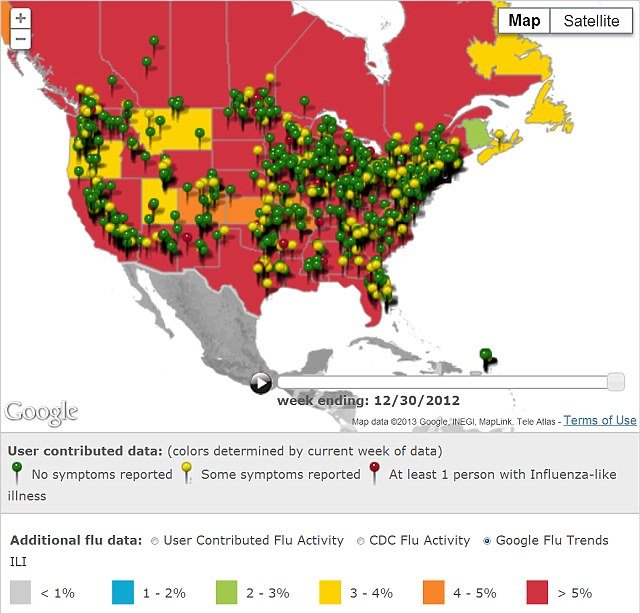According to the World Health Organization, a surge in cases of the deadly new strain of bird flu has been reported in China at the beginning of 2014.
Only a handful of people had been infected with H7N9 since June, but health officials have reported 73 cases so far this month.
Influenza researchers argue the winter season and preparations for Chinese New Year may be driving the increase.
The WHO called for vigilance, saying the virus was likely to remain present for some time.
H7N9 made the jump from infecting domestic chickens and ducks to infecting people at the end of March 2013.
Within a month, 126 cases and 24 deaths had been recorded.
The virus was stopped in its tracks as control measures, such as closing live poultry markets, were introduced.

Influenza researchers argue the winter season and preparations for Chinese New Year may be driving the increase of bird flu cases
There were just five cases between June and November.
The recent jump takes the total number of cases to 219, including 55 deaths.
Apart from a couple of cases in close family clusters, the virus has not been able to spread from person to person.
Gregory Hartl, spokesman for the WHO, said flu viruses circulated more easily during the colder winter months.
“Our calculation was always that we were going to have to watch the winter, and that’s where we are at the moment.
“We need to remain vigilant, but so far the virus does not seem to have mutated in any way,” he says.
“Some people will be looking very closely at the Chinese New Year, when there will be lots of people travelling.
“It will be crowded on trains and they’ll also be travelling with chickens.”
The H7N9 virus itself, however, does not appear to have mutated in a way that could make it more likely to spread around the globe.
[youtube FRvy3VcalKM 650]
Amphotericin B, a drug commonly used to beat severe fungal infections, can make flu far worse, animal studies suggest.
The effects in people are still uncertain, but doctors have called for it to be assessed “urgently”.
Amphotericin B is given to people needing chemotherapy or a bone marrow transplant.
The findings, in the journal Cell Reports, showed the drug interfered with the way the body defended itself against flu.

Amphotericin B is given to people needing chemotherapy or a bone marrow transplant
Previous research had shown that the protein IFITM3 makes it harder for a flu virus to infect the body.
Mice that are unable to produce the protein are more vulnerable to infection and will have more severe symptoms.
Now researchers at the University of Massachusetts and the Sanger Institute in the UK have shown that an antifungal drug destroys IFITM3 and leaves mice susceptible to flu.
Prof. Abraham Brass, from the University of Massachusetts Medical School, said: “Sometimes a very useful drug can also have unforeseen effects.
“We now see that a major part of the body’s natural defenses to influenza virus is rendered inactive by Amphotericin B.
“While these studies don’t confirm that such an interaction may translate into clinical relevance for patients, it does suggest that some vigilance is warranted, especially for patients who are undergoing treatment for cancer and may already have suppressed immune systems.”
The U.S. has been hit with a particularly aggressive early flu season with widespread reports of the illness across the country, hospitalizing 2,257 people and leaving 18 children dead before the end of 2012.
And health officials say the numbers haven’t even peaked yet.
“I think we’re still accelerating,” Tom Skinner, a Center for Disease Control and Prevention spokesman, told reporters.
The latest figures from the CDC show 29 states and New York City reporting high levels of flu activity, up from 16 states and New York City just one week prior.
Overall, 41 states reported cases.
“It’s about five weeks ahead of the average flu season,” said Lyn Finelli, lead of the surveillance and response team that monitors influenza for the CDC’s National Center for Immunization and Respiratory Diseases.
“We haven’t seen such an early season since 2003 to 2004.”
During that flu season, Joe Lastinger’s daughter Emily, 3, died only five days after coming down with the flu in late January.
“That was the first really bad season for children in a while,” said Joe Lastinger, 40.
“For whatever reason that’s not well understood, it affected her and it killed her.”
In that season, illnesses peaked in early to mid-December, with flu-related pneumonia and deaths peaking in early January.
That season was considered a “moderately severe” season for flu, and ended in mid-February.
It’s still too early to tell how bad this year’s flu season will get.

The US has been hit with a particularly aggressive early flu season with widespread reports of the illness across the country
While the CDC is waiting for more time to pass before classifying the season, Google Flu Trends has already listed it as “intense” by monitoring flu activity around the world based on internet search terms.
And roughly 4% of users on Flu Near You, a real-time tracking tool gaining about 100 new participants per week, say they’re experiencing symptoms.
“That’s huge,” John Brownstein, an epidemiologist and assistant professor of pediatrics at Harvard Medical School and Children’s Hospital Boston, told NBC News.
“Last year, we never got near this.”
John Brownstein is one of the founders of Flu Near You, a project, coordinated by Children’s Hospital Boston, the Skoll Global Threats Fund and the American Public Health Association.
The project has been a great tool for generating immediate data about the ongoing flu season.
“It’s what we call <<nowcasting>>,” John Brownstein said.
“It’s a more up-to-date view.”
CDC data can be as much as two weeks behind real-time reports.
John Brownstein’s data shows cough is this year’s most frequently reported symptom at 19%, ahead of sore throat at 16%, fatigue at 15%, headache at 14%, body ache at 10%, and fever at 7%.
Three out of four people reporting flu symptoms had not been vaccinated.
While John Brownstein’s data is more immediate, he cautioned against using it as an accurate measure of vaccine’s effectiveness because of variables in reporting.
During the 2010-2011 flu season, the CDC reports vaccine’s were effective for about 60% for all age groups combined.
While there were then reports of vaccinated people developing laboratory-confirmed flu strains, CDC officials said it’s not yet possible to know if this year’s trends match up though they are “watching the situation closely”.
Those officials also noted that this year’s vaccines seem to be a good match for the two strains of influenza A and one of influenza B circulating.
The H3N2 strain is dominant this year, and it can cause more serious illnesses.
Flu seasons vary widely in severity with some year’s totaling up to 200,000 hospitalized and between 3,000 to 49,000 dead.
About 127 million doses of flu vaccine have been distributed this year from the 15 million doses produced for this season.
Do you have the flu? These are the symptoms to watch for:
According to data being gathered by Flu Near You, flu cases have increased dramatically over the last few weeks. Here are the season’s most-reported symptoms:
1. Cough – 19%
2. Sore throat – 16%
3. Fatigue – 15%
4. Headache – 14%
5. Body Ache – 10%
6. Fever – 7%
Scientists have developed EP67, a new spray that helps boost the immune system can fight off flu in just two hours – even before symptoms.
The drug, delivered by a nasal spray, contains a synthetic protein that triggers the immune system to fight the flu before the body normally would.
Once a person is exposed to the flu, current treatments are designed to target the current circulating strain exactly, but the virus can sometimes develop a resistance against them.
This new treatment doesn’t need to match the virus exactly and gets the immune system to react almost immediately to the threat before the body normally would.

Scientists have developed EP67, a new spray that helps boost the immune system can fight off flu in just two hours
Flu is potentially fatal to people with a low immune system as they struggle to shake off the infection and can also be lethal to the elderly.
Researchers at San Diego State University in America focused the study on the protein EP67, which has previously been used as something added to a vaccine to help activate the immune response, but they wanted to see if it would work on its own.
They tested EP67 on mice by infecting them with a flu virus – finding those given a dose within 24 hours did not get sick, or as sick, as those not treated with the protein.
The level of illness in mice is measured by weight loss – typically mice lose about 20% of their weight when infected with the flu, but those treated with EP67 lost an average of 6%.
The researchers also found mice who were treated a day after being infected with a lethal dose of influenza did not die.
EP67 is active in animals, including birds, so the finding could also have huge implications for veterinary applications.
It could also be used if there is a new strain of the infectious disease, before the actual pathogen has been identified, like in SARS or the 2009 H1N1 influenza outbreak.
Future research will examine the effect EP67 has in the presence of a number of other pathogens and look closer at exactly how EP67 functions within different cells in the body.
Although this study, published in science journal PLoS ONE, focuses on the flu, EP67 has the potential to work on other respiratory diseases and fungal infections and could have huge potential for emergency therapeutics.
Professor Joy Phillips, of San Diego State University, said: “The flu virus is very sneaky and actively keeps the immune system from detecting it for a few days until you are getting symptoms.
“Our research showed that by introducing EP67 into the body within 24 hours of exposure to the flu virus caused the immune system to react almost immediately to the threat, well before your body normally would.
“When you find out you’ve been exposed to the flu, the only treatments available now target the virus directly but they are not reliable and often the virus develops a resistance against them.
“EP67 could potentially be a therapeutic that someone would take when they know they’ve been exposed that would help the body fight off the virus before you get sick.”




